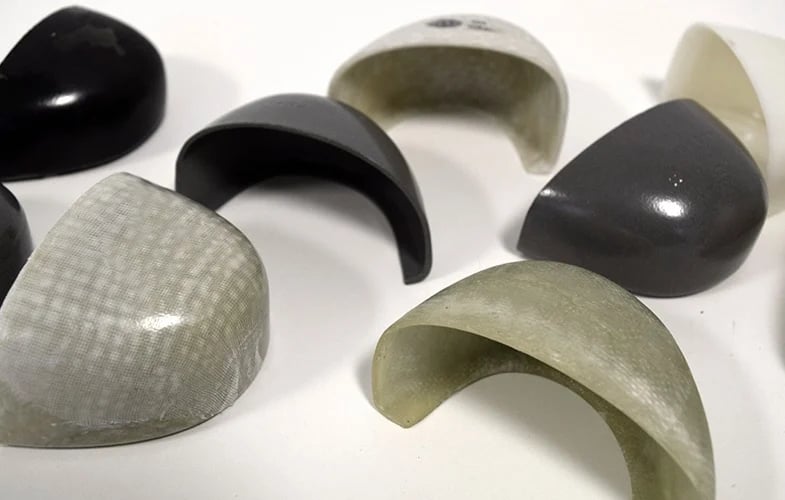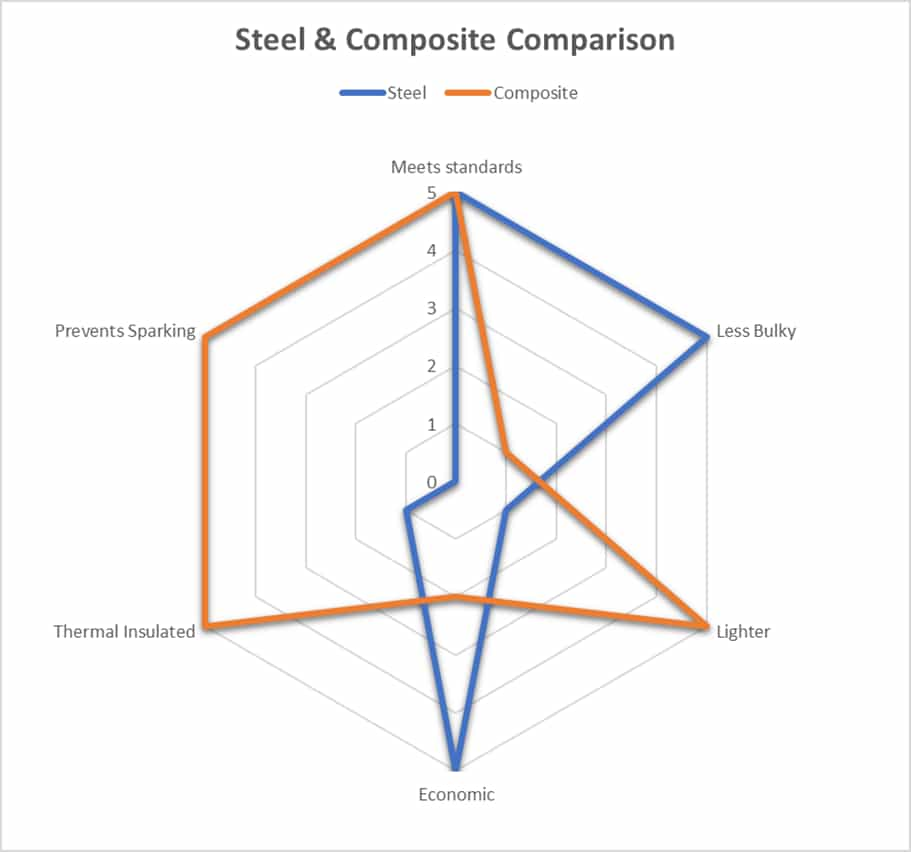How do I know if I should use Steel-toe-cap Safety Boots or Composite?

Have you been looking for safety boots and don't know whether to go for composite toe work boots or steel protection? Do you believe steel "must" be safer however you like the idea of composite toe cap boots?
We will get into details, but if you have the following question: 'Do composite toe cap boots pass safety standards?', the answer is yes. Both composite and steel protection in safety boots meet the European Safety Standard of EN 20345:2011 for safety footwear. Therefore, it's up to you to decide what type of boots you need to wear for best safety practices to ensure your employees or wearers are protected.
Composite toe Safety Boots Protection
What is a composite safety toe boot?
A composite safety toe boot is a type of work boot that features a protective toe cap made from non-metallic materials such as Kevlar, carbon fiber, or fiberglass instead of steel.
These materials provide excellent protection from impact and compression while being much lighter and more comfortable to wear than traditional steel-toed boots. Additionally, composite safety toe boots are often designed to be more flexible. They are commonly used in a variety of industries, including construction, manufacturing, and transportation, where foot protection is essential for worker safety.
What are the benefits of composite toecaps?
Composite protection, especially in the form of toecap protection, is noticeably lighter to wear than steel.
Let's take a quick look at an average composite toe-capped boot on the market, the V12 Otter boot, which weighs in at 792 grams over against a steel toe-capped product from Dewalt, Dewalt Douglas, which weighs 870 grams. Both styles are providing weights for a size 8 boot which you can see there is a significant weight difference.
While the above examples are subjective there is always going to be a difference in the build and components used but you get the idea of the difference in weight. The point is that over an 8-hour, and 10,000 steps period you are reducing the weight you have to lift by an approximate average of 780kg, that's per day. Over a 21 working day month, you have reduced fatigue in weight lifted by 16,380kg. An average large male elephant weighs 6,800kg!
These toe cap styles are more comfortable to wear in colder working environments as they warm up to body temperature faster than steel will. Remember steel is a conductor of hot or cold temperatures so will create more discomfort.
Is there anything else about composite footwear that I should know?
Yes, there is. Composite materials do not conduct electricity, so when steel toe caps or midsole accidentally penetrate through any footwear covering you must arrange to replace the footwear immediately, especially when worn in explosive or electrostatic environments.
Also, because of a larger toe-fitting area, it is more comfortable to wear.
Can I get composite midsole protection?
Yes. The original steel midsole design was produced from 0.5mm approx thickness of steel which is milled and formed. The pros of using this metal plate are that it will
stop even the finest types of sharps from penetrating the sole. The cons are that it is heavier and lacks the flexibility of composite materials.
Composite midsoles are made up of multi-layers of woven material that are bonded together which protects the foot while reducing fatigue over long durations. During
testing, both types of midsole must undergo 1 million flexes to ensure they do not show signs of decay such as cracking, delamination, or disintegration.
The penetration test used for both steel and composite midsoles is the same. The test is applied using the same shape as a steel nail and a force of 1100N is applied. The tip of the nail must not penetrate through the test piece.
Steel-toe-cap Safety Boots Protection
How did Steel-toe-cap boots come about?
Steel-toe-cap protection has been in place at least since the 1930’s when the Red Wing Shoes Company started to manufacture and sell steel toe-capped boots. It is also known that German soldiers in WW2 were equipped with reinforced metal toe-capped boots.
Why should I wear Steel-toe-cap Safety Boots?
As steel is naturally stronger than composite materials, a thinner layer can be used to reach the same strength, which provides a more subtle profile of footwear to wear. The cost of production is cheaper to manufacture, which provides for a more economic purchase.
A Comparison Chart
You can use the table below to choose the footwear for you based on your priorities.

Based on your research we can assure you that whether it be steel or composite work boots all safety boots must meet or exceed the required safety standards.
All safety footwear should come packaged with user instructions and a copy of the Certificate of Conformity along with the manufacturer or importers' contact details. All certificates of testing and tracing should be retained by the manufacturers.
What safety boots options are available to me?
From 30 years of experience, we can recommend many good manufacturers of quality safety footwear and a few we found are as follows
- V12 Footwear: high quality, innovative products and have good attention to detail and quality. Provide a range that complements both the indoor and outdoor wearer.
- Sixton Footwear: a high-quality range with deserved recognition for being innovative and durable. When you have purchased a pair of these you don't generally come back for a replacement too soon.
- Cofra Footwear: a good European brand with a wide product range. A “go to” range for diversity.
- Uvex Footwear: Global brand with innovation and attention to detail in what is produced.
What further actions can I take?
You can find out more about steel and composite boots, by checking out this range of products which will provide you with insight using the following selector
Academic White Paper: Please download the V12 Academic White Paper
Can I conduct a Safety Boots trial?
Why would conducting a product trial help you with selecting the right style of footwear?
The answer here is simple: if you know the product is the best fit for the job at hand, you will not waste time and money buying it and rolling it out in bulk.
If you just buy without trying first, you run the risk of buying a lot of products that won’t work for you and your team. This is a waste of time and money, for sure, but it can also have a huge impact on the planet if footwear is disposed of prematurely.
Read this article about running a successful product trial to ensure that you can be sure the products you are buying for your team won’t go to waste.